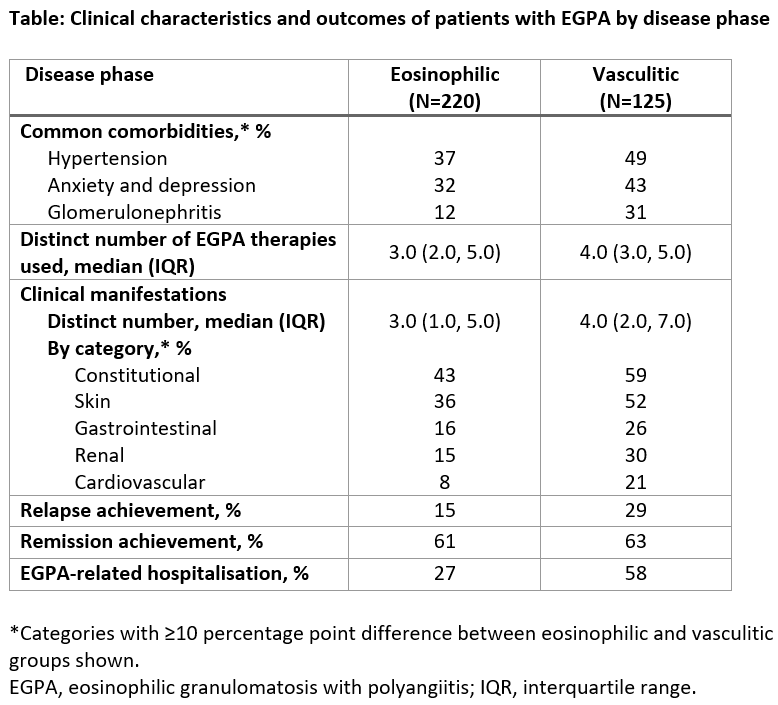Abstract
Introduction: Eosinophilic granulomatosis with polyangiitis (EGPA) is a rare form of vasculitis involving small-to-medium-sized blood vessel vasculitis, hypereosinophilia and asthma. Limited data exists on the clinical symptoms and treatment options for patients with EGPA in Europe, and even less data in terms of disease phase.
Aims and objectives: To describe the clinical characteristics, treatment patterns and healthcare resource use for patients with EGPA in Europe according to disease phase.
Methods: This retrospective study used real-world data from 204 physicians in 5 European countries. Data were abstracted from chart reviews of patients ?12 years of age at the time of EGPA diagnosis with first patient encounter after diagnosis between January 2015?December 2019 and ?1 year of follow-up data from first encounter. Disease phase was assessed at first physician encounter after EGPA diagnosis.
Results: Charts of 407 patients were included; 54% of patients were eosinophilic and 31% were in the vasculitic disease phase. Patients with vasculitic disease had more comorbidities, clinical manifestations, and worse outcomes versus those with eosinophilic disease (Table).
Conclusions: EGPA significantly impacts both patients and healthcare systems in Europe, highlighting the need for improved EGPA diagnosis and management, particularly among patients in the vasculitic phase.
Funding: GSK (214661)
